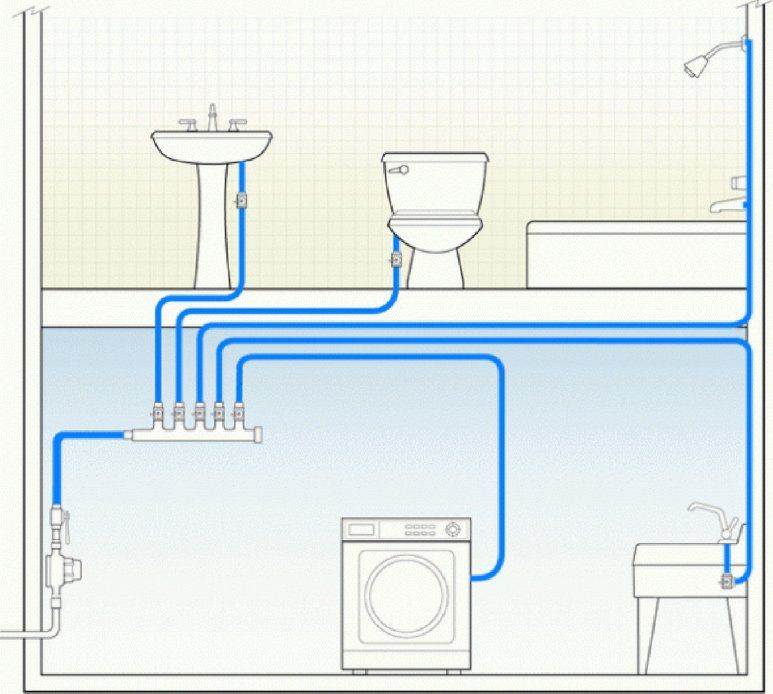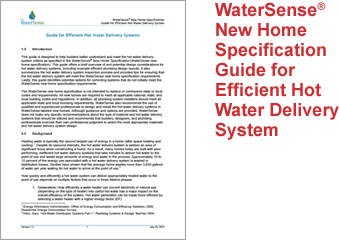Eco-Friendly Products
Low-Flow Faucets Low-Flow Showerheads Low-Flush Toilets Advanced Plumbing
Home-run Manifold Planned Layouts
Reduce Waiting Time for Hot Water
We’re all familiar with the long wait: You turn on a hot-water faucet and wait for the hot water to arrive. Several factors make this problem worse: Our houses are bigger, with more fixtures and appliances that use hot water, and the plumbing code is mandating larger-diameter pipes. Experts agree that “roughly 20% of total hot-water use in single-family residences seems to be wasted.”
Sound planning saves energy
Heat losses increase with the diameter of the line, the distance the water must travel, and inversely with the speed at which the water moves. A large volume of slow-moving water sheds more heat as it travels to its destination than a smaller amount of water moving quickly.
For that reason, traditional trunk-and-branch systems (with large diameter tubing) are less efficient at retaining heat, especially when hot-water lines are not insulated, than manifold home-run systems.
Home-run advantages. A home-run system requires more tubing than a conventional trunk-and-branch system because each fixture has its own dedicated water supplies. Still, there are several advantages:
- Water pressure remains stable to all fixtures when several are used at the same time.
- Hot water is delivered faster and less water is wasted.
- Simplified installation means lower costs.
- Home-run systems work well with open building systems, for less invasive, easier remodeling Hot Water Distribution – Efficient Plumbing design.
This guide is for building and plumbing professionals, but interested homeowners may also find this useful.
LEED POINTS
- LEED-H EA7 (Energy & Atmosphere) offers 2 points for efficient hot water distribution.
- NGBS Under Ch. 8 — Water Efficiency: up to 8 pts. for hot water use reduction based on efficiency hot water distribution system design/layout (801.1)
A note on Pipe Insulation:
- Hot water pipes may run through cooler parts of the house — a crawl space or joist bay in the basement ceiling. Wrapping lines with foam insulation reduces energy losses, and gets hot water to its destination faster.
- Pipe insulation also reduces condensation on cold water lines during the summer.
It’s not that easy to make the right choice.
The standard rough-in for a toilet is 12",
but it can also be 10" or 14".
We make it easy.





